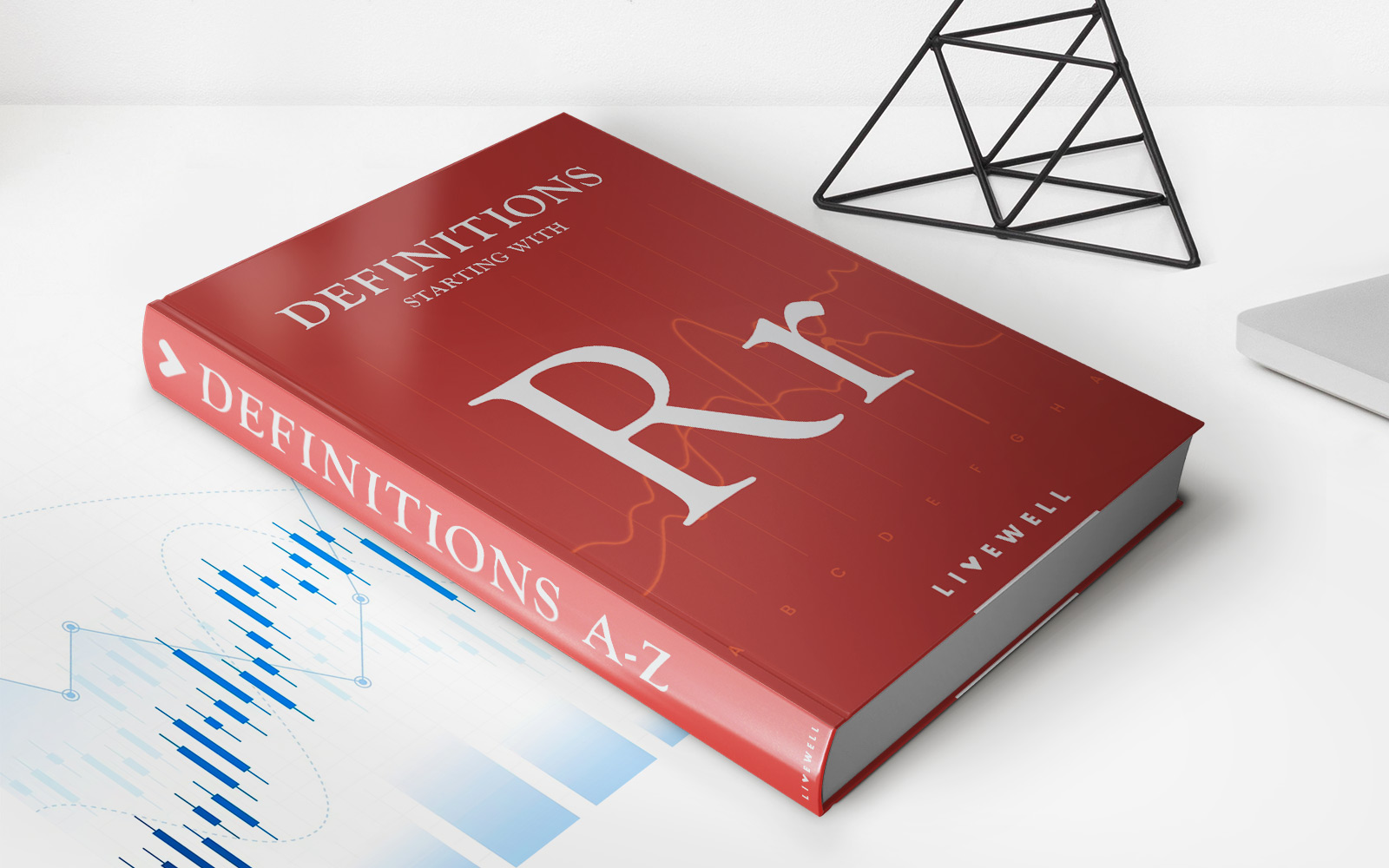

Finance
What Is Reserve In Accounting
Modified: March 1, 2024
Learn about the concept of reserves in accounting and how it impacts the finance of a business. Gain insights into managing and utilizing reserves effectively.
(Many of the links in this article redirect to a specific reviewed product. Your purchase of these products through affiliate links helps to generate commission for LiveWell, at no extra cost. Learn more)
Table of Contents
Introduction
Welcome to the world of accounting and finance, where numbers tell the story of a company’s financial health. In this complex world, one term that plays a crucial role is “reserves.” Reserves are a key component of an organization’s financial strategy and play a vital role in ensuring stability, growth, and mitigating risks.
In simple terms, reserves refer to funds set aside by a company for specific purposes. These funds act as a safety net, providing a cushion for unforeseen expenses, economic downturns, or strategic investments. Reserves are not just a financial asset but a strategic tool that helps businesses weather uncertainties and secure their future.
In this article, we will delve deeper into the concept of reserves in accounting, exploring their definition, types, purpose, accounting procedures, and their impact on financial statements.
Before we delve into the specifics, it’s important to note that reserves are different from profits or retained earnings. While profits are generated from the company’s operations and belong to its shareholders, reserves are created by setting aside a portion of profits for specific purposes, safeguarding the company’s financial position.
So, let’s now dive into the world of reserves and understand their significance in the realm of accounting and finance.
Definition of Reserves
In the field of accounting, reserves are defined as the portion of a company’s profits that are set aside and retained within the business entity. These funds are not distributed to shareholders as dividends but are instead held in reserve for various purposes. Reserves act as a financial buffer, providing a safety net to meet future obligations, mitigate risks, and support growth initiatives.
Reserves can be seen as a form of internal saving for a company, ensuring that it has sufficient resources to navigate uncertainties and capitalize on opportunities. They serve as a financial cushion that can be tapped into when needed, protecting the company’s stability and long-term sustainability.
The concept of reserves is applicable to various types of entities, including corporations, non-profits, and government organizations. However, the specific rules and regulations governing reserves may vary based on the industry, jurisdiction, and organizational structure.
It’s important to note that reserves are not the same as provisions. Provisions are amounts set aside for specific liabilities or potential future expenses, whereas reserves are more general in nature and serve to strengthen the financial position of the company as a whole.
Reserves are typically disclosed in the financial statements of a company, providing transparency to shareholders and stakeholders. The allocation and utilization of reserves are governed by accounting principles and regulations to ensure accuracy, consistency, and integrity in reporting.
Now that we have a clear understanding of what reserves are in accounting, let’s explore the different types of reserves that companies may establish.
Types of Reserves
Reserves can be classified into various types, each serving a specific purpose within a company’s financial structure. Let’s take a closer look at some common types of reserves:
- General Reserves: General reserves, also known as free reserves, are created from a company’s retained earnings and are not earmarked for any specific purpose. These reserves provide flexibility to the company, allowing it to address unforeseen events or capitalize on business opportunities. General reserves act as a safety net and strengthen the financial position of the company.
- Specific Reserves: Specific reserves, as the name suggests, are set aside for a specific purpose or contingency. These reserves are created to meet future obligations, such as potential legal liabilities, environmental remediation costs, or warranty claims. Specific reserves help the company anticipate and allocate funds for specific risks or obligations, ensuring there are sufficient resources available when needed.
- Capital Reserves: Capital reserves are created from non-operating activities and transactions, such as the sale of assets, issuance of shares at a premium, or revaluation of assets. These reserves are not available for distribution as dividends and are used to strengthen the company’s capital structure. Capital reserves are typically utilized for expansion initiatives, debt repayment, or funding future capital expenditures.
- Revenue Reserves: Revenue reserves are generated from the company’s revenue-generating activities. These reserves are created from profits that are not distributed as dividends but are retained within the business. Revenue reserves include retained earnings, which are the cumulative profits retained in the company over time. These reserves contribute to the company’s long-term financial stability and can be utilized for various purposes, such as funding research and development, acquiring new assets, or expanding operations.
It’s important to note that these are just a few examples of reserves, and companies may establish additional reserves based on their specific needs and industry requirements. The creation and utilization of reserves are governed by accounting standards and regulations to ensure transparency and accountability in financial reporting.
Now that we understand the different types of reserves, let’s explore the purpose they serve within a company’s financial framework.
Purpose of Reserves
Reserves serve several important purposes within a company’s financial framework. Let’s explore some of the main purposes of reserves:
- Financial Stability: One of the primary purposes of reserves is to ensure the financial stability of a company. By setting aside funds, companies create a safety net to navigate through challenging times, economic downturns, or unexpected expenses. Reserves act as a buffer, providing the necessary liquidity to meet financial obligations and mitigate risks.
- Risk Mitigation: Reserves play a crucial role in mitigating risks. By establishing specific reserves for contingencies or potential liabilities, a company prepares itself to handle unforeseen events that may arise in the future. Whether it’s legal claims, environmental hazards, or warranty obligations, having reserves allocated for these risks helps companies address them without jeopardizing their financial position.
- Expansion and Growth: Reserves are often utilized for expansion and growth initiatives. These funds can be invested in research and development, acquiring new assets, entering new markets, or funding strategic acquisitions. By using reserves to fuel growth, companies can seize opportunities and position themselves for long-term success.
- Capital Structure Enhancement: Capital reserves contribute to strengthening a company’s capital structure. These reserves, generated from activities like the sale of assets or revaluation of assets, enable companies to optimize their financial leverage and improve their debt-to-equity ratio. By bolstering the capital structure, companies enhance their financial position and gain access to better financing options.
- Dividend Distribution: While most reserves are not meant for immediate distribution, companies may utilize reserves to declare dividends to shareholders. Dividends can be paid out of accumulated profits or from specific revenue reserves, providing shareholders with a return on their investment and attracting potential investors.
It’s important for companies to strike a balance between retaining sufficient reserves for stability and growth and distributing profits to shareholders. This balance ensures financial security while rewarding shareholders for their investment.
Overall, reserves serve as a strategic tool for companies to safeguard their financial position, mitigate risks, support growth, and ensure the long-term sustainability of the business. The allocation and utilization of reserves require careful consideration and adherence to accounting principles and regulations.
Now that we understand the purpose of reserves, let’s explore the accounting procedures associated with establishing and managing reserves.
Accounting for Reserves
Accounting for reserves involves several procedures and principles to ensure accurate reporting and transparency. Let’s delve into the key aspects of accounting for reserves:
1. Creation of Reserves: Reserves are created by transferring a portion of the company’s profits to a separate account. This transfer is typically done through the appropriation of profits, where a specific amount is earmarked for reserves during the annual general meeting or through the board of directors’ decision. The creation of reserves is documented in the company’s financial statements.
2. Classification of Reserves: Reserves are classified based on their purpose and nature. Companies categorize reserves such as general reserves, specific reserves, capital reserves, or revenue reserves to indicate their intended use and strengthen transparency in financial reporting. Each type of reserve has specific guidelines for their creation and utilization.
3. Recognition and Disclosure: Reserves must be appropriately recognized and adequately disclosed in the company’s financial statements. The reserves should be detailed in the balance sheet and may also be explained in the notes to the financial statements. Disclosure helps shareholders and stakeholders understand the company’s financial position and the purpose of the reserves.
4. Utilization of Reserves: Reserves can be utilized for specific purposes as allowed by law and the company’s policies. The utilization of reserves should follow proper procedures and comply with relevant regulations. Whether it’s funding growth initiatives, addressing contingencies, or distributing dividends, the utilization of reserves should be documented and disclosed in the financial statements.
5. Reporting and Analysis: Companies should regularly report and analyze the movement and utilization of reserves. This helps evaluate the adequacy of reserves, their impact on the company’s financial position, and their effectiveness in addressing risks and supporting growth. Regular analysis of reserves ensures that the company maintains a balanced financial structure and adequately plans for the future.
6. Regulatory Compliance: Accounting for reserves is subject to various regulations and accounting standards. Companies must adhere to these rules to ensure accurate and reliable financial reporting. The regulations may vary depending on the jurisdiction, industry, and nature of the company.
By following these accounting procedures, companies can maintain transparency, accuracy, and accountability in the creation and utilization of reserves. This ensures that the reserves effectively serve their intended purpose and contribute to the company’s overall financial well-being.
Now let’s explore some examples of reserves to gain a better understanding of their practical application.
Examples of Reserves
Reserves can take various forms depending on the specific needs and circumstances of a company. Let’s explore some examples of reserves:
- General Reserves: A company may establish a general reserve to provide flexibility and stability. This reserve acts as a buffer for unexpected expenses or economic downturns. It can be utilized to cover operational costs, invest in research and development, or fund strategic initiatives that contribute to the long-term growth of the company.
- Legal Reserves: In many jurisdictions, companies are required to set aside a certain percentage of their profits as a legal reserve. This reserve acts as a financial safeguard to protect creditors and shareholders. It ensures that a portion of the company’s profits is retained within the business to meet any potential legal obligations or financial contingencies.
- Contingency Reserves: Companies may establish contingency reserves to address potential risks or liabilities. For example, a manufacturing company might set aside a contingency reserve to cover potential warranty claims or product recalls. This reserve provides a financial cushion to mitigate unexpected liabilities and protect the company’s financial position.
- Dividend Reserves: Dividend reserves are created to meet future dividend payments to shareholders. These reserves are built up over time from retained earnings to ensure that the company has sufficient funds to distribute as dividends. Dividend reserves give a company the ability to maintain a consistent dividend payout, even during periods of economic uncertainty or fluctuating profits.
- Expansion Reserves: Companies planning to expand or undertake significant capital investments may establish expansion reserves. These reserves are earmarked to fund expansion projects, such as opening new locations, acquiring assets, or entering new markets. Expansion reserves allow companies to allocate funds specifically for growth initiatives without putting undue pressure on their operating cash flow.
These are just a few examples of reserves that companies may establish. Each reserve serves a specific purpose and helps companies manage uncertainties, meet obligations, and support growth. The allocation and utilization of reserves are determined based on the company’s financial goals, industry requirements, and regulatory guidelines.
Now that we have explored various examples of reserves, let’s discuss the impact reserves have on a company’s financial statements.
Impact of Reserves on Financial Statements
Reserves play a significant role in shaping a company’s financial statements and provide insights into its financial health and stability. Let’s examine the impact of reserves on the key financial statements:
1. Balance Sheet: Reserves are reflected in the equity section of the balance sheet, specifically under the retained earnings category. Retained earnings represent the cumulative profits that have been retained in the company over time, including any reserves that have been set aside. The presence of reserves strengthens the financial position of the company and indicates its ability to absorb unexpected expenses or fund future growth.
2. Income Statement: Reserves do not directly impact the income statement. Instead, they affect the distribution of profits in the form of dividends. When a company decides to distribute dividends, it can use reserves (such as dividend reserves) to cover the dividend payments. However, the actual utilization of reserves may not be explicitly stated on the income statement itself.
3. Cash Flow Statement: While reserves do not have a direct impact on the cash flow statement, they indirectly influence it. For example, if a company utilizes its reserves to fund expansion projects or investments, it may result in cash outflows in the investing activities section of the cash flow statement. The utilization of reserves can affect the cash flow patterns of a company and impact its overall cash position.
4. Notes to Financial Statements: The notes to the financial statements provide additional details and disclosures about reserves. Companies are required to disclose information regarding the types of reserves, their purpose, and any restrictions or regulations governing their utilization. This allows stakeholders to have a better understanding of the company’s financial position and its strategies for managing reserves.
The presence of reserves on a company’s financial statements demonstrates its prudence in managing its financial affairs and its ability to handle uncertainties and future obligations. Reserves indicate that the company has set aside resources to mitigate risks, support growth, and ensure long-term sustainability.
It’s essential to note that the impact of reserves on financial statements can vary depending on the specific types of reserves established, their utilization, and the accounting policies followed by the company.
Now, let’s summarize the key points discussed and conclude our exploration of reserves in accounting.
Conclusion
Reserves are a fundamental component of accounting and finance, providing companies with financial stability, risk mitigation, and growth opportunities. These funds, set aside from a company’s profits, play a crucial role in bolstering its financial position and ensuring its long-term sustainability.
In this article, we explored the definition of reserves and their various types, including general reserves, specific reserves, capital reserves, and revenue reserves. We discussed the purposes served by reserves, such as financial stability, risk mitigation, expansion, and enhancing the company’s capital structure.
We also covered the accounting procedures involved in creating and managing reserves, emphasizing the importance of recognition, disclosure, and compliance with regulations. Furthermore, we explored examples of reserves commonly established by companies, ranging from general reserves to dividend reserves.
Lastly, we discussed the impact of reserves on financial statements, with reserves being reflected in the balance sheet and indirectly influencing the cash flow statement. Reserves provide valuable insights into a company’s financial health and its ability to handle uncertainties and future obligations.
Overall, reserves act as a strategic tool for companies, enabling them to navigate risks, invest in growth, and ensure the long-term stability of their operations. By effectively managing reserves, companies can maintain a strong financial position and create value for their shareholders.
As you continue to explore the world of accounting and finance, understanding reserves and their significance will contribute to your ability to evaluate the financial health and prospects of companies.
Remember, reserves are not just numbers on a financial statement; they represent the financial fortitude and foresight of a company in building a solid foundation for the future.














